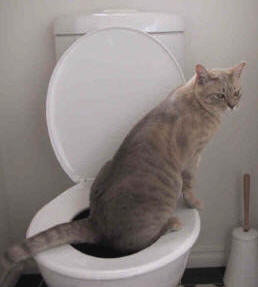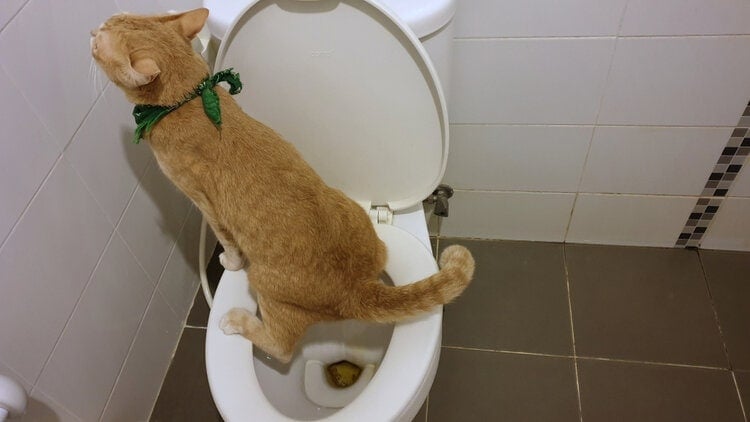Prevent Plumbing Problems: Never Flush Cat Poop Down Your Toilet - Expert Guidance
Prevent Plumbing Problems: Never Flush Cat Poop Down Your Toilet - Expert Guidance
Blog Article
What are your thoughts regarding Don’t flush cat feces down the toilet?

Intro
As pet cat proprietors, it's vital to bear in mind just how we dispose of our feline good friends' waste. While it might appear practical to flush cat poop down the commode, this method can have harmful consequences for both the setting and human health and wellness.
Alternatives to Flushing
Luckily, there are much safer and much more responsible means to deal with cat poop. Think about the following options:
1. Scoop and Dispose in Trash
One of the most common method of taking care of feline poop is to scoop it into a naturally degradable bag and toss it in the trash. Make certain to utilize a dedicated trash inside story and get rid of the waste without delay.
2. Use Biodegradable Litter
Go with eco-friendly feline trash made from materials such as corn or wheat. These litters are eco-friendly and can be securely gotten rid of in the garbage.
3. Hide in the Yard
If you have a lawn, think about hiding cat waste in a designated location far from vegetable gardens and water resources. Be sure to dig deep sufficient to stop contamination of groundwater.
4. Install a Pet Waste Disposal System
Purchase a pet dog waste disposal system particularly developed for feline waste. These systems make use of enzymes to break down the waste, reducing odor and ecological influence.
Wellness Risks
In addition to environmental problems, flushing cat waste can likewise posture health risks to people. Feline feces might contain Toxoplasma gondii, a parasite that can cause toxoplasmosis-- a potentially serious health problem, specifically for expectant ladies and people with weakened immune systems.
Environmental Impact
Flushing cat poop introduces dangerous virus and bloodsuckers right into the water, posing a considerable danger to water environments. These impurities can adversely influence aquatic life and concession water quality.
Conclusion
Responsible animal ownership extends past giving food and sanctuary-- it additionally entails correct waste monitoring. By avoiding flushing feline poop down the bathroom and choosing alternative disposal methods, we can minimize our ecological footprint and secure human health and wellness.
Why Can’t I Flush Cat Poop?
It Spreads a Parasite
Cats are frequently infected with a parasite called toxoplasma gondii. The parasite causes an infection called toxoplasmosis. It is usually harmless to cats. The parasite only uses cat poop as a host for its eggs. Otherwise, the cat’s immune system usually keeps the infection at low enough levels to maintain its own health. But it does not stop the develop of eggs. These eggs are tiny and surprisingly tough. They may survive for a year before they begin to grow. But that’s the problem.
Our wastewater system is not designed to deal with toxoplasmosis eggs. Instead, most eggs will flush from your toilet into sewers and wastewater management plants. After the sewage is treated for many other harmful things in it, it is typically released into local rivers, lakes, or oceans. Here, the toxoplasmosis eggs can find new hosts, including starfish, crabs, otters, and many other wildlife. For many, this is a significant risk to their health. Toxoplasmosis can also end up infecting water sources that are important for agriculture, which means our deer, pigs, and sheep can get infected too.
Is There Risk to Humans?
There can be a risk to human life from flushing cat poop down the toilet. If you do so, the parasites from your cat’s poop can end up in shellfish, game animals, or livestock. If this meat is then served raw or undercooked, the people who eat it can get sick.
In fact, according to the CDC, 40 million people in the United States are infected with toxoplasma gondii. They get it from exposure to infected seafood, or from some kind of cat poop contamination, like drinking from a stream that is contaminated or touching anything that has come into contact with cat poop. That includes just cleaning a cat litter box.
Most people who get infected with these parasites will not develop any symptoms. However, for pregnant women or for those with compromised immune systems, the parasite can cause severe health problems.
How to Handle Cat Poop
The best way to handle cat poop is actually to clean the box more often. The eggs that the parasite sheds will not become active until one to five days after the cat poops. That means that if you clean daily, you’re much less likely to come into direct contact with infectious eggs.
That said, always dispose of cat poop in the garbage and not down the toilet. Wash your hands before and after you clean the litter box, and bring the bag of poop right outside to your garbage bins.
https://trenchlesssolutionsusa.com/why-cant-i-flush-cat-poop/

We hope you liked our article about Don’t flush cat feces down the toilet. Thanks so much for taking the time to read through our piece of content. Sharing is caring. You won't know, you may just be doing someone a favor. Kudos for your time. Kindly stop by our website back soon.
Call Today Report this page